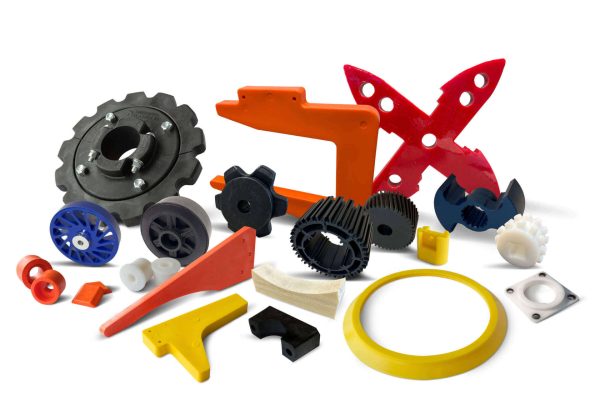Project Report For Plastic Parts For Engineering Equipment
Introduction
Project Report For Plastic Parts for Engineering Equipment is as follows.
The engineering industry, plastic parts have largely taken the role of metal parts in recent years. It has been shown to improve their products, save costs, and speed up the manufacturing process by switching from metal parts and assemblies to plastic. The objective of switching from metal to plastic is to boost product or component integrity while decreasing overall weight and expense.
It is also cost-effective to use injection-molded components composed of high-performance thermoplastics in applications requiring fewer units. We provide specialized plastic components for mechanical engineering, industry, agricultural machinery, and other manufacturers from a wide range of industries. No matter if the focus is on high temperatures in dryers or on wear resistance when used in construction or agricultural machinery, injection molded parts are suited for demanding operating situations.

Although plastic parts are made to last a long time even under the most difficult circumstances and are frequently used because of their resistance to substances, extreme temperatures, harsh chemicals, humidity, and UV light, how designers, buyers, and engineers specify and have them manufactured varies.
To find out which materials, procedures, and designs have been effective, it is frequently conducted to evaluate similar prior applications. Specifiers frequently choose a well-known plastic grade from a related application. This selection of polymers may be adequate but is rarely the best option. an internal plastic moulding facility for the mass production of standard and sophisticated plastic parts for toys, robotics, electrical, and automotive applications.
Our plastic machine shop produces very high quality, precise parts with very tight dimensional tolerances for the engineering components that are moulded there. Additionally, quicker cycle durations can be obtained employing the most recent high-speed robotic equipment, often minimising take out time. We can give our customers highly competitive costs as a result of this, which results in maximum production.
Project Report Sample On
Plastic Parts For Engineering
Equipment
Get Completely Custom Bankable Project Report

Benefits For Plastic Parts For Engineering Equipment
- Due to their unique molecular structure, engineering plastics can be readily moulded into any complicated shape.
- Engineering plastics are lighter in weight than their equivalents.
- When compared to normal plastic materials, they are noted for their capacity to absorb stress and vibration.
- They can endure physical impact and are thus suitable for heavy-duty applications.
- Engineering polymers are resistant to fire.
- When these materials come into touch with corrosive fluids and oils, they remain unaffected.
- They are heat resistant and have outstanding dimensional precision.
- Engineering plastics may be easily formulated with fillers and additives to modify their physical, chemical, and thermal characteristics to meet the needs of the application.
- Many of these polymers are considered environmentally benign since they can be recycled and reprocessed.
Market Potential For Plastic Parts For Engineering Equipment
The market for engineering plastics was estimated to be worth USD 107.2 billion in 2022 and is anticipated to expand to USD 140.9 billion by 2027, with a compound annual growth rate (CAGR) of 5.6% between 2022 and 2027.
The rising vehicle sector as a result of increased urbanisation is essentially driving the expansion of the engineering plastics market. Engineering plastics, which are widely utilised in automotive and transportation elements such as exteriors, engines, mechanical parts, the interior, fuel structures, and electric and electronic components, are becoming increasingly popular as vehicle production increases.
The market for engineering plastic is rising as a consequence of growth in the electronic and electrical sectors, which is being driven by increased demand for electronic goods such as storage batteries, computers, communication devices, switchgear, and switchboard. Furthermore, a growth in the number of educational institutions with computer laboratories is a crucial driver supporting engineering plastic market expansion in the near future.

